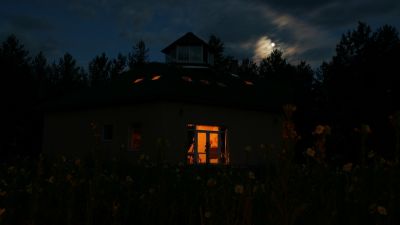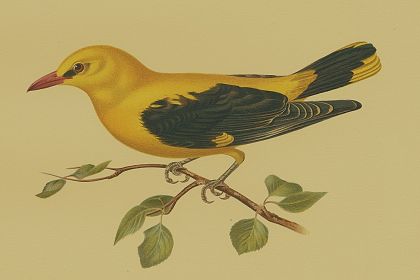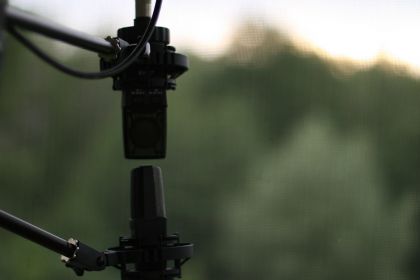Nature Sounds
Overnight recording of spring bird orchestra accompanied by wind and crickets rhythm ensemble

Spivaki Records at Night
Country: Ukraine
Genre: Soundscapes
The numerous studies conducted in recent decades have postulated the undeniable benefits of listening to the sounds of nature, specifically for city residents. Listening to nature sounds on a regular basis may help compensate for the gap between their urban environment and the subconscious human need to find peace in nature.
Humans have been aware of the effects nature often exercises upon the human mind, such as the musicality of birds and rhythmic patterns of chorusing insects. This fundamental understanding can be clearly observed in the works of many composers who have been imitating the sounds of nature in their music since the Baroque era.
This review contains a transcript of the sounds of one overnight recording session featuring bird songs, cricket choirs, wind blowing, and other sounds of nature. These soundscapes were recorded during spring in the depths of a mixed forest where a set of microphones captured a stereo panorama. The captured soundscapes are that of a meadow with a diameter of about 100 meters that produces a multi-level echo and deep reverb. You can also download these nature sounds in HQ for free.
The nature concert opens with a nightingale recorded around midnight who tirelessly varies its song for an hour until it was frightened off by a creature who made a distinct rustle of foliage not far from the bird. The nightingale sings from the bush located on the left while the recording is balanced by the choirs of crickets audible, for the most part, in the right channel. In the center of the stereo panorama, you can clearly hear the wind sir the crowns of tall trees and then gradually subside towards the end of the track. In the background, another nightingale can sometimes be heard singing far in the depths of the forest.
Listen to Nightingale song accompanied by wind, crickets, and woodland sounds:
As you can hear, the soundscape is very much reminiscent of a musical performance since both the nightingale and the cricket choirs are tuned to a general tonic which in certain fragments of the recording is very close to the note E.
After some time, the nightingale resumes its chanting, now having settled in the depths of the meadow. The bird's volume decreased due to the distance from the microphone but now it sings closer to the far edge of the forest meadow and the reverb has become deeper and more distinct. In the second part of the recording, the bird bustle increases to proclaim the dawn of a new day.
Listen to Nightingale song in the predawn hours gives way to various bird calls and morning bustle:
On the left channel of the next soundscape, you can hear the red-backed shrike singing in the bush where the nightingale previously located. Perhaps it was the shrike nesting here who frightened off the nightingale. On the recording, the nightingale is still singing in the background surrounded by other birds.
Listen to Shrike morning calls with nightingale and multiple birds in the background:
The following short piece contains a bird trio of the shrike, warbler, and nightingale. The warbler that comes later has an alarm-like call that goes well with the chirping of the shrike who will soon be silent. The warbler and shrike are heard in the left channel while a nightingale, singing in the distance, fills the background.
Listen to Bird trio of shrike, warbler, and nightingale jamming together in the woods:
The final morning recording of this set features all the awakened winged inhabitants of the forest, including the woodpecker tapping at the trunks of pine trees and flying around the meadow. By this time, сrickets have fallen almost completely silent and are partially overshadowed by the morning bustle of many species of birds.
Listen to Morning bird orchestra featuring nightingale, shrike, warbler, and woodpecker:
By studying the human ear and its functions, scientists came to the conclusion that all headphones are harmful since they create high levels of pressure in the ear canal, causing irreversible changes that ultimately result in deafness. The same studies have proven earphones to be even more dangerous than headphones due to their more intrusive placement. If you plan on listening to both music and nature sounds in headphones, it is recommended you not exceed the advised limited of one hour per day.
The best way to listen to sounds of nature requires only a speaker system and the playback volume should not exceed the natural level of these sounds.



